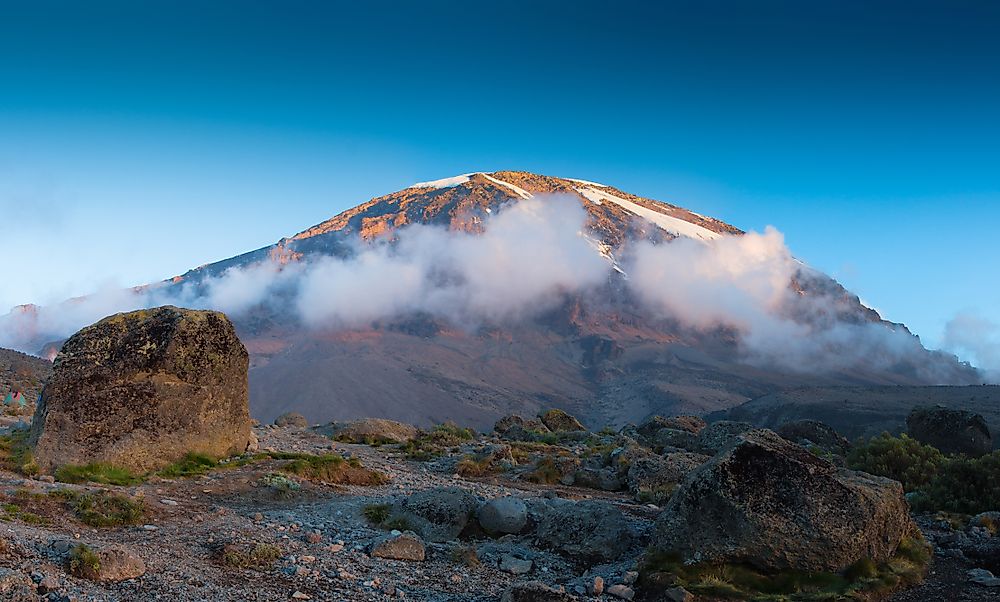Are Volcanoes Mountains?

Similarities exist between mountains and volcanoes. However, there is a difference in their formation. A mountain results from various geological processes such as movement and opposition of tectonic plates. On the other hand, a volcano forms around a vent when magma flows out and reaches the surface of the earth.
Formation of a Mountain
A mountain results from the movement and opposition of tectonic plates. Upon collision, tectonic plates form pointed peaks and valleys. The earth's crust (outer layer) is composed of six massive slabs known as tectonic plates. Tectonic plates are always in motion, often moving several centimeters annually. When two tectonic plates move against each other and collide, the earth’s crust thickens and deforms. Due to the collision pressure, some of the land mass is pushed upwards forming a mountain.
Formation of a Volcano
A volcano results from collection of lava after several volcanic eruptions. Hot magma flows through a vent and cools upon reaching the surface of the earth. A volcanic mountain is made up of lava and piles of rocks. There are two categories of volcanic mountains: shield volcanoes and stratovolcanoes. Steep rising cones characterize stratovolcanoes. During their formation, the magma has high viscosity thus cools fast and does not spread far from the vent. Stratovolcanoes erupt less frequently but once they erupt, their eruption is more violent than that of shield volcanoes.
Shield volcanoes have gently sloping cones. During their eruption, low-viscosity materials and basalt are emitted and these spread far from the vent. Therefore, shield volcanoes are not as steep as the stratovolcanoes.
In some instances, magma may not reach the surface of the earth. Instead, magma pushes beneath the surface of the earth's crust causing overlying rock to rise. Upon the cooling of the magma, a hardened rock is formed resulting to an uplifted area referred to as a dome mountain.
Volcanic Facts
Magma is liquid rock within a volcano and upon reaching the earth's surface it is referred to as lava. During an eruption, lava can have a temperature of up to 1200 degrees Celsius. Besides lava, a more dangerous flow known as pyroclastic flow occurs during an eruption. It consists of fragments and hot gases, which flows down the slopes of a volcano. This flow destroys anything it encounters and travels at a speed of up to 430 mph. Across the world, there are 19,000 active volcanoes, which have the potential to erupt. The US has 169 active volcanoes. The soil around volcanic areas is very rich and fertile thus many people live around volcanoes.
Additional Differences Between a Mountain and a Volcano
Though a volcano is a type of mountain, it has a v-crater, magma, and lava. A mountain does not have any of these components. Mountain areas are peaceful and safe to visit and stay. On the other hand, volcanoes are aggressive and may erupt when least expected. Mountains may contain water but you cannot find any traces of water in a volcano. Mountains always have elevations higher than their surroundings. For a landform to qualify as a mountain, it must rise for over 600 meters above the surrounding area. However, not all volcanoes have higher elevations than the surrounding area. Volcanoes may form part of mountain ranges. Some mountains such as Mt. Kilimanjaro qualify as both a mountain and a volcano.











